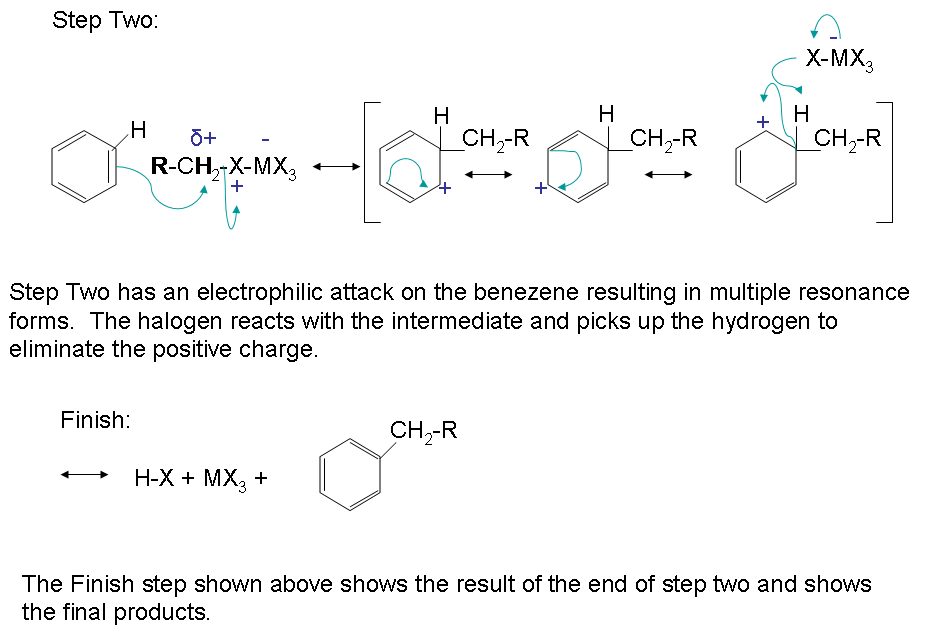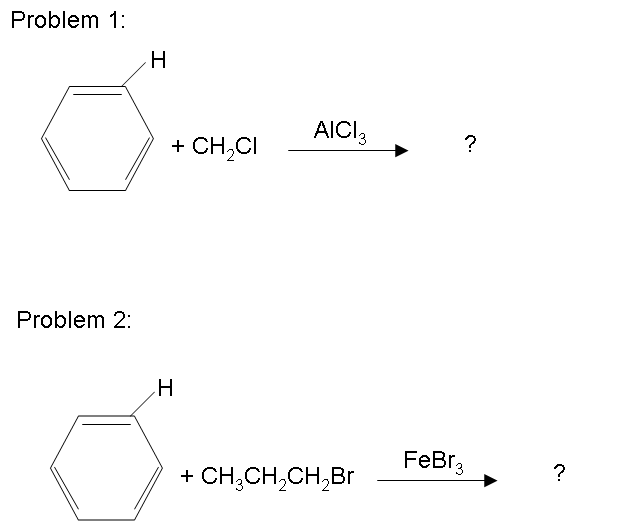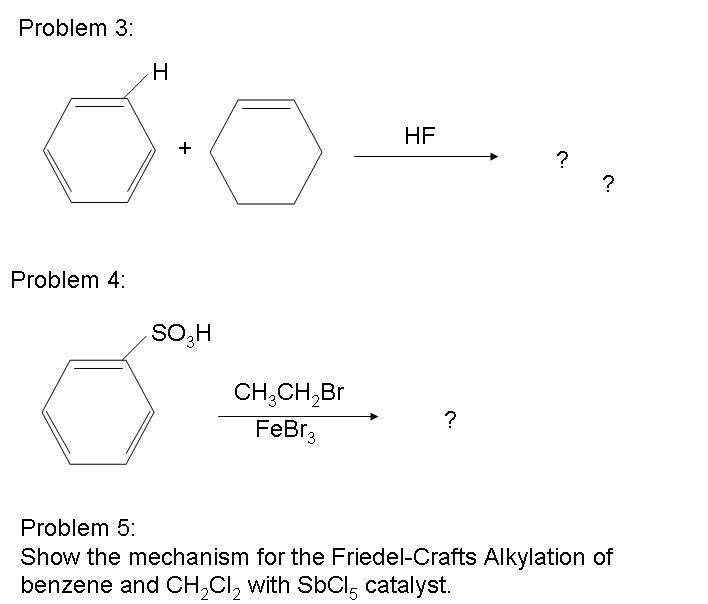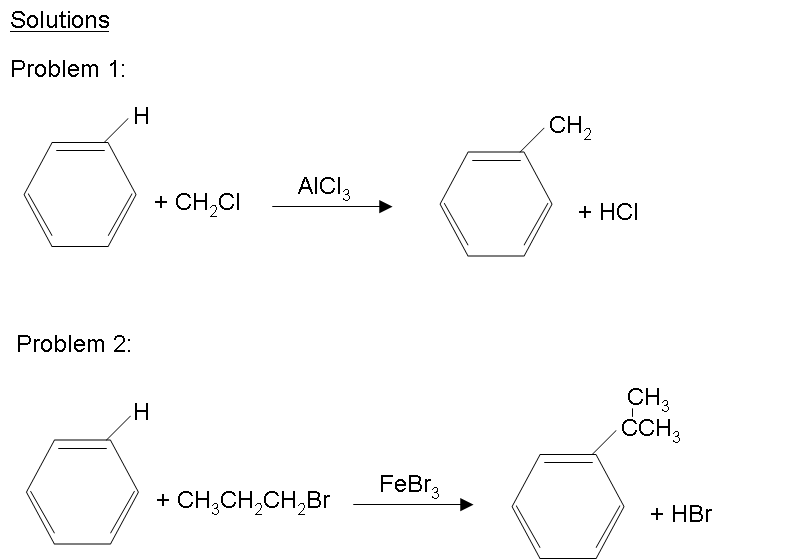Friedel-Crafts Alkylation
- Page ID
- 935
The reaction was discovered in 1877 when Friedel and Crafts found that a haloalkane will react with benzene with an aluminum halide catalyst, or any other Lewis acid catalyst, to produce an alkylbenzene and a hydrogen halide. Friedal-Crafts Alkylation allows for the addition of a carbon-carbon bond to a benzene ring to form an alkyl benzene.
Introduction
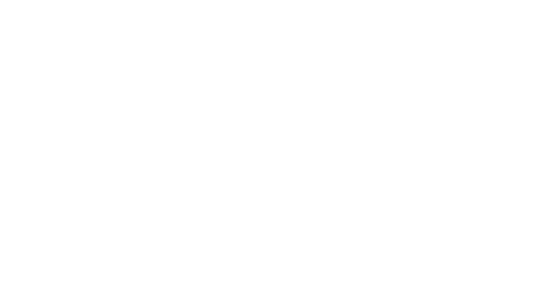
The mechanism takes place as follows:
The reactivity of haloalkanes increases as you move up the periodic table and increase polarity. This means that an RF haloalkane is most reactive followed by RCl then RBr and finally RI. This means that the Lewis acids used as catalysts in Friedel-Crafts Alkylation reactions tend have similar halogen combinations such as BF3, SbCl5, AlCl3, SbCl5, and AlBr3, all of which are commonly used in these reactions.
Some limitations of Friedel-Crafts Alkylation
There are possibilities of carbocation rearrangements when you are trying to add a carbon chain greater than two carbons. The rearrangements occur due to hydride shifts and methyl shifts. For example, the product of a Friedel-Crafts Alkylation will show an iso rearrangement when adding a three carbon chain as a substituent. Also, the reaction will only work if the ring you are adding a substituent to is not deactivated. For a look at substituents that activate or deactivate a benzene ring, check out the wiki page: Activating and Deactivating Benzene Rings One way to resolve these problems is through Friedel-Crafts Acylation.
Outside links
References
- Vollhardt, and Schore. Organic Chemistry Sturcture and Funtion. 5th ed. New York: W.H. Freeman and Company, 2007.


.bmp?revision=1&size=bestfit&width=720&height=414)
